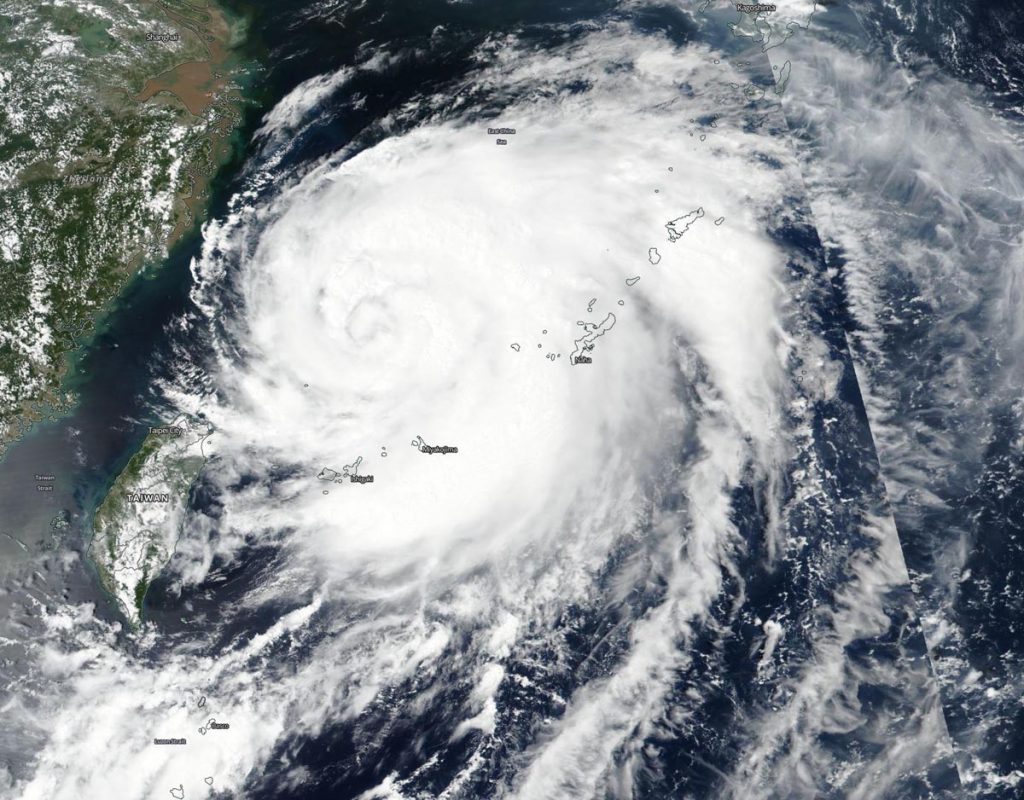Aug. 24, 2020 – NASA-NOAA Satellite Find Typhoon Bavi Fill the East China Sea
NASA-NOAA’s Suomi NPP satellite provided forecasters with a visible image of Typhoon Bavi filling up a good portion of the East China Sea.

Bavi’s life began as a tropical depression, 09W, that formed on Aug. 21 over 350 nautical miles from Kadena Air Base, Okinawa Island, Japan. On Aug. 22, when it strengthened into a tropical storm it was named Bavi. By 5 a.m. EDT (0900 UTC) on Aug. 23, the storm continued to strengthen and reached typhoon status when it was about 548 nautical miles south-southwest of Chinhae, South Korea.
On Aug. 24, the Visible Infrared Imaging Radiometer Suite (VIIRS) instrument aboard Suomi NPP provided a visible image of Bavi. It was located in the East China Sea, west of the chain of Ryukyu Islands. Powerful thunderstorms circled the eye, which was obscured by high clouds. Bands of thunderstorms from the storm’s eastern quadrant extended over the Ryukyu island chain.
At 5 a.m. EDT (0900 UTC) on Aug. 24, the center of Typhoon Bavi was located near latitude 27.8 degrees north and longitude 216.6 degrees east. Bavi is centered about 450 nautical miles south-southwest of Chinhae, South Korea. Bavi is moving to the northeast and had maximum sustained winds 75 knots (86 mph/139 kph).
Bavi is forecast to continue strengthening to 110 knots (127 mph/204 kph), before weakening rapidly on passing through the Yellow Sea and west of the Korean Peninsula. Bavi is expected to make landfall in northwestern North Korea on Aug. 26.
NASA Researches Tropical Cyclones
Hurricanes/tropical cyclones are the most powerful weather events on Earth. NASA’s expertise in space and scientific exploration contributes to essential services provided to the American people by other federal agencies, such as hurricane weather forecasting.
For more than five decades, NASA has used the vantage point of space to understand and explore our home planet, improve lives and safeguard our future. NASA brings together technology, science, and unique global Earth observations to provide societal benefits and strengthen our nation. Advancing knowledge of our home planet contributes directly to America’s leadership in space and scientific exploration.
